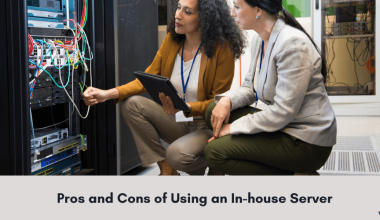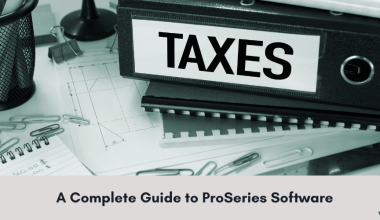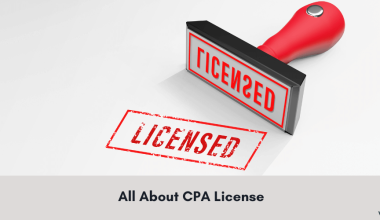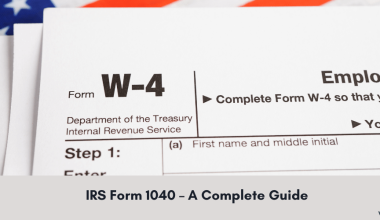Becoming a Certified Public Accountant (CPA) involves a series of significant milestones, with one of the most pivotal being the Uniform CPA Examination. Aspiring accountants need to pass this exam to demonstrate their proficiency in various areas, including accounting, taxation, etc. Passing the CPA exam requires careful preparation, dedication, and a thorough understanding of its structure and content.
Mastering the intricacies of the exam is essential for those aiming to attain their CPA license. Understanding the exam’s structure, content, and nuances can help with the preparation. With passing rates varying and the exam’s reputation for complexity, having a comprehensive understanding of what to expect can significantly impact your preparation strategy and overall success.
In this comprehensive guide, we will cover the essential aspects that comprise this challenging yet rewarding CPA exam.
What Does The CPA Exam Cover?
The CPA exam evaluate your knowledge and skills across four core areas of accounting and finance:
-
Auditing and Attestation (AUD)
This section covers auditing procedures, attestation engagements, professional responsibilities, and ethics. You will be tested on your ability to assess risk, plan and perform audit procedures, and evaluate audit evidence.
-
Business Environment and Concepts (BEC)
The BEC section assesses your understanding of economic/business concepts, financial management, information technology, and operations management. Topics also include corporate governance, economic indicators, etc.
-
Financial Accounting and Reporting (FAR)
This section tests candidates’ knowledge of financial accounting standards, financial statement preparation, and reporting for different entities. Your knowledge will be tested on different topics, such as revenue recognition, leases, pensions, and governmental accounting.
-
Regulation (REG)
The REG section covers federal taxation, business law, ethics, and professional responsibilities related to tax practice. Topics include individual taxation, corporate taxation, property transactions, business law principles, and ethical considerations in tax practice.
You should also know that:
- You can sit for each section of the CPA Exam individually and in any order, providing flexibility in scheduling based on individual preferences and readiness.
- It’s also possible to take two, three, or all four sections of the exam in a single session, allowing you to expedite their certification process if desired.
- The CPA exam questions are asked in three formats: multiple choice, task-based, and written response.
- Multiple choice questions are the most common format, testing your knowledge and understanding of various accounting and finance concepts.
- Task-based simulations assess your ability to apply accounting principles and problem-solving skills in simulated real-world scenarios.
- Written response questions, while less common, require you to articulate your responses in writing, demonstrating communication and analytical abilities.
More About CPA Exam Structure
| Section | Question Formats | Time |
| Auditing and Attestation | 72 multiple choice questions8 task-based simulations | 4 hours (240 min) |
| Business Environment and Concepts | 62 multiple choice questions4 task-based simulations
3 written response questions |
4 hours (240 min) |
| Financial Accounting and Reporting | 66 multiple choice questions8 task-based simulations | 4 hours (240 min) |
| Regulation | 76 multiple choice questions8 task-based simulations | 4 hours (240 min) |
Understanding the structure of each section is vital for effective CPA exam preparation, allowing you to allocate time efficiently and familiarize yourself with the types of questions you will encounter on test day.
More About CPA Exam Scoring System
The following table represents the scoring system and can help you understand how to gauge your performance accurately and strategize exam preparation:
| Section | Multiple Choice Scoring Weightage | Task-Based Simulation Scoring Weightage | Written Response Scoring Weightage | Score Range | Passing Score |
| Auditing and Attestation | 50% | 50% | N/A | 0–99 | 75 |
| Business Environment and Concepts | 50% | 35% | 15% | 0–99 | 75 |
| Financial Accounting and Reporting | 50% | 50% | N/A | 0–99 | 75 |
| Regulation | 50% | 50% | N/A | 0–99 | 75 |
You should also know that:
- The CPA exam employs a weighted scoring system, which considers question difficulty. The BEC section includes written response questions, making it the only part of the exam with this format.
- The AICPA is responsible for scoring all exams. Scores are released on a rolling basis, with the timing dependent on when the AICPA receives your exam file.
- CPA exam score release schedules vary annually, and the AICPA updates its timetable accordingly.
- The passing scores on all four individual sections of the exam are necessary to qualify for CPA certification.
How to Register for the CPA Examination?
1. Apply to NASBA
The CPA exam registration process commences with applying to the National Association of State Boards of Accountancy (NASBA) for approval to sit for the exam. During this stage, you need to submit academic transcripts and fulfill any other state-level requirements. NASBA then reviews your credentials.
2. Receive Notice to Schedule (NTS)
Upon approval, you will receive a Notice to Schedule (NTS) online through your NASBA account. The NTS provides a list of available dates, times, and locations for scheduling the exam. Options vary by state and year, with early applicants often enjoying a wider array of choices.
3. Review Additional Requirements
Additional requirements may vary by state, including factors such as U.S. citizenship, state residency, and the need for a U.S. Social Security number (SSN) to sit for the CPA exam or obtain CPA certification. For instance, Alaska has no citizenship, residency, or SSN requirements, while North Carolina mandates all three.
4. Access State-Specific Information
For further details on state-specific requirements, you can refer to NASBA’s CPA exam portal, which provides comprehensive information tailored to each state’s regulations and guidelines.
More About CPA Examination Fees
NASBA administers application and registration fees for the CPA exam. First-time applicants need to pay an application fee along with exam fees for each of the four sections. On the other hand, re-exam applicants pay a reduced registration fee along with the standard exam fees for each section.
While these costs are generally uniform across states, some jurisdictions may have their own fee schedules. However, most states’ fee structures are similar.
As with other aspects of CPA exam planning, you can refer to NASBA portal for state-specific information regarding examination fees.
How to Prepare for the CPA Exam?
The journey to CPA exam success begins with thorough preparation. Here are five essential tips to help you excel:
1. Create a Study Schedule
Start preparing well in advance of your exam date. Build a study schedule to allocate dedicated time for reviewing each section of the exam. Consistent and structured study sessions will help you cover all necessary material effectively.
2. Know the Exam Format in Detail
The CPA exam follows a fixed format with a specific number of test sections and question formats. Take the time to familiarize yourself with the question styles in each section, including multiple choice, task-based simulations, and written response questions. Understanding the exam structure will help you feel more confident and prepared on test day.
3. Use Practice Tests
Utilize free practice tests and sample exam questions available online. These tests allow you to assess your knowledge, improve your test-taking skills, and become acquainted with the exam’s structure and content. Additionally, practice tests help reinforce key accounting and business concepts essential for success.
4. Know Your Strengths and Weaknesses
After completing practice tests, evaluate your performance and identify your strengths and weaknesses in each question format. Focus on areas where you excel while dedicating extra time to practice and review topics where you struggle. This targeted approach will help you optimize your study time and improve your overall readiness for the exam.
5. Work More on Difficult Concepts
Compile a list of challenging concepts encountered during your study sessions. Take the time to research these topics thoroughly, utilizing resources such as textbooks, online tutorials, and study guides. Additionally, apply these concepts to real-life scenarios to deepen your understanding and ensure retention.
Success on the CPA exam is achievable with diligent study and perseverance. With thorough preparation and a focused mindset, you can confidently approach the exam and take significant strides towards achieving your goal of becoming a CPA.















3 comments
Comments are closed.